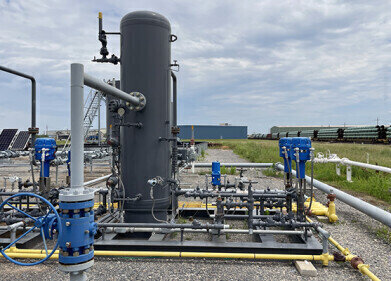Air Clean Up
How Many Asthma Cases Are Linked to Pollution?
May 20 2019
As many as 13% of all childhood asthma diagnoses worldwide could be attributable to air pollution, according to a new study from George Washington University (GWU) in the American capital of Washington DC. The study, which was published in The Lancet’s Planetary Health journal, measured concentrations of nitrogen dioxide (NO2) and cross-referenced these against population data and asthma records to come up with their disturbing results.
The overall total of children who may contract asthma as a direct result of exposure to poor air quality could be as much as four million every year single. Indeed, given that many developing countries do not always successfully diagnose asthma sufferers, and given that NO2 is only one of several harmful contaminants in our atmosphere, the actual figure of asthma cases linked to pollution could well be far higher.
Concerning conclusions
Scientists have long been aware that air pollution could put you at risk of asthma, but as yet had little quantifiable figures to back up that claim. The GWU study collated measurements of NO2 concentrations collected by terrestrial monitoring equipment and satellites, then matched those figures against population dates and recorded diagnoses of asthma in children from doctors all over the world.
The results of their investigation showed that over one in ten (13%) of all childhood asthma cases could be caused directly by air pollution. Even more concerningly, that figure only accounts for exposure to NO2; particular matter, carbon monoxide and ozone are all equally troubling contaminants which are also likely to cause respiratory complications or exacerbate existing ones.
An infamous leader-board
The nations found to have the poorest track record of children contracting asthma thanks to air pollution was headed up by South Korea. 31% of its child asthmatics are believed to have developed the disease thanks to exposure to high levels of NO2. Meanwhile, the Middle Eastern quartet of Kuwait (30%), Qatar (30%), United Arab Emirates (30%) and Bahrain (26%) were not far behind. The UK, the USA and China all saw relatively low - but still quite high - percentages of 19%.
Meanwhile, the Middle East was also top of the table in terms of per capita childhood asthmatics whose condition was brought on by traffic pollution. Kuwait has 550 sufferers for every 100,000, while the UAE is a close second with 460 for every 100,000 citizens. A surprise third was Canada, who has 450 sufferers for every 100,000 of the population.
Rewriting the rules
While environmentalists will certainly use the study to levy governments to improve air quality and reduce transport-related pollution, perhaps the most concerning aspect of its findings is that most children actually live in areas in which NO2 concentrations are within recommended “safe” limits as set by the World Health Organisation (WHO). As a result, it’s likely that such bodies will need to re-examine their guidelines for what constitutes a safe level of exposure to these deadly contaminants.
“This strengthens the case for the downward revision of these global [pollution] standards and for stronger national policy initiatives in countries without air quality standards,” said Professor Rajen Naidoo, from the South African University of KwaZulu-Natal. His sentiments were echoed by Toxicology Fellow Dr Matthew Loxham from the University of Southampton, who said: “The issue is how we generate the data to decide what the [WHO] guideline levels should be or - perhaps more fundamentally - get across the message that there is no appropriate guideline level.”
Events
Apr 22 2024 Hannover, Germany
Apr 23 2024 Kuala Lumpur, Malaysia
Apr 24 2024 Sao Paulo, Brasil
May 05 2024 Seville, Spain
May 13 2024 Munich, Germany














